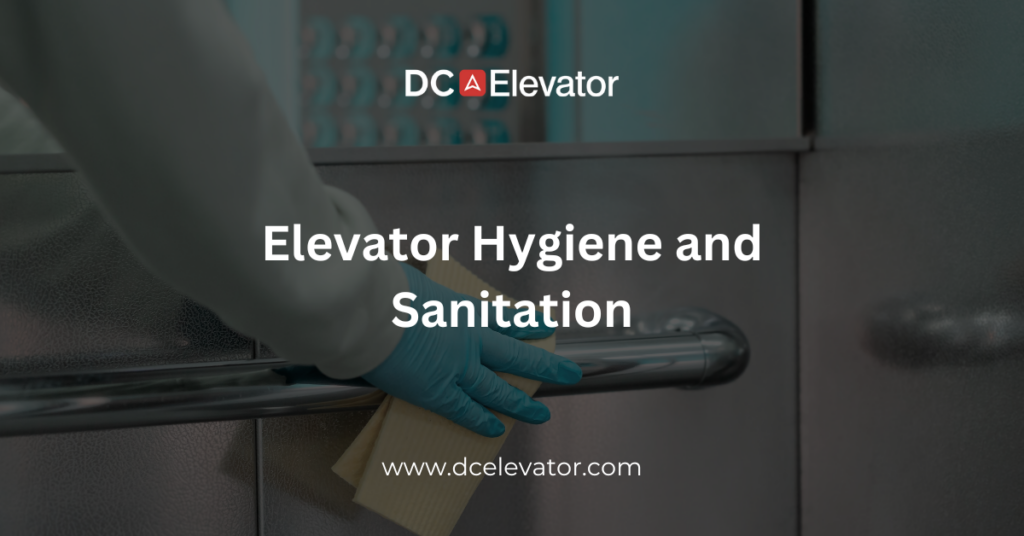Elevators are an integral part of our daily lives, facilitating movement in buildings and helping us reach our destinations efficiently. However, with the ongoing emphasis on hygiene and safety in public spaces, it’s essential to consider the cleanliness and sanitation of elevators. In this blog post, we’ll explore the importance of elevator hygiene and sanitation and provide tips on how to keep these vertical transportation systems safe for all.
The Need for Elevator Hygiene
Elevators are enclosed spaces shared by numerous people, making them potential hotspots for the spread of germs and viruses. This is especially concerning in today’s world, where infectious diseases can spread rapidly. Elevator hygiene is crucial to maintain public health and ensure the safety of passengers.
Tips for Maintaining Elevator Hygiene
1. Regular Cleaning and Disinfection
Elevators should be regularly cleaned and disinfected, paying special attention to frequently touched surfaces like buttons, handrails, and the elevator floor. Using appropriate disinfectants and cleaning practices can help reduce the risk of disease transmission.
2. Touchless Technology
Implementing touchless technology can minimize the need for physical contact with elevator surfaces. Touchless buttons, keycard access, and voice-activated controls are all options that can enhance elevator hygiene.
3. Promoting Good Hygiene Practices
Building managers and property owners should encourage elevator users to practice good hygiene. This includes wearing face masks, using hand sanitizers, and avoiding crowded elevators when possible. Signs and reminders in elevators can help reinforce these practices.
4. Adequate Ventilation
Proper ventilation is essential to reduce the concentration of airborne contaminants in elevators. Building managers should ensure that elevators are well-ventilated to improve air quality.
Elevator Safety in a Post-Pandemic World
The COVID-19 pandemic has reshaped how we view public spaces and hygiene. In response, elevator manufacturers and building managers have been adapting to meet the evolving needs of passengers. Here are some trends shaping the future of elevator hygiene:
1. UV-C Sterilization
Some elevators are now equipped with UV-C lighting that sterilizes the cabin continuously. This technology is effective at deactivating viruses and bacteria.
2. Smart Elevators
Smart elevators with advanced monitoring systems can collect data on usage and cleanliness. This data can be used to optimize cleaning schedules and maintain a safe environment.
3. Antimicrobial Materials
Elevator manufacturers are exploring the use of antimicrobial materials for buttons and handrails, which can inhibit the growth of bacteria and viruses.
Your Role in Elevator Hygiene
As an elevator user, you also play a significant role in elevator hygiene. Here’s how you can contribute:
- Practice Good Personal Hygiene: Wash your hands before and after using elevators, and use hand sanitizer.
- Wear a Face Mask: In enclosed spaces, wearing a mask can help reduce the spread of airborne particles.
- Limit Crowding: If possible, avoid crowded elevators. Wait for the next one to maintain physical distancing.
- Report Issues: If you notice a cleanliness issue or malfunctioning features in an elevator, report it to building management.
Elevator Hygiene: A Shared Responsibility
Elevator hygiene and sanitation are not the sole responsibility of building owners or elevator manufacturers; they are a shared responsibility among all users. By following good hygiene practices, promoting cleanliness, and adapting to new technologies, we can ensure that elevators remain safe and efficient means of vertical transportation.
The next time you step into an elevator, remember that your actions can help protect public health and ensure the safety of all passengers. Elevators, like any public space, can be kept clean and safe with the right measures and a collective commitment to hygiene.
